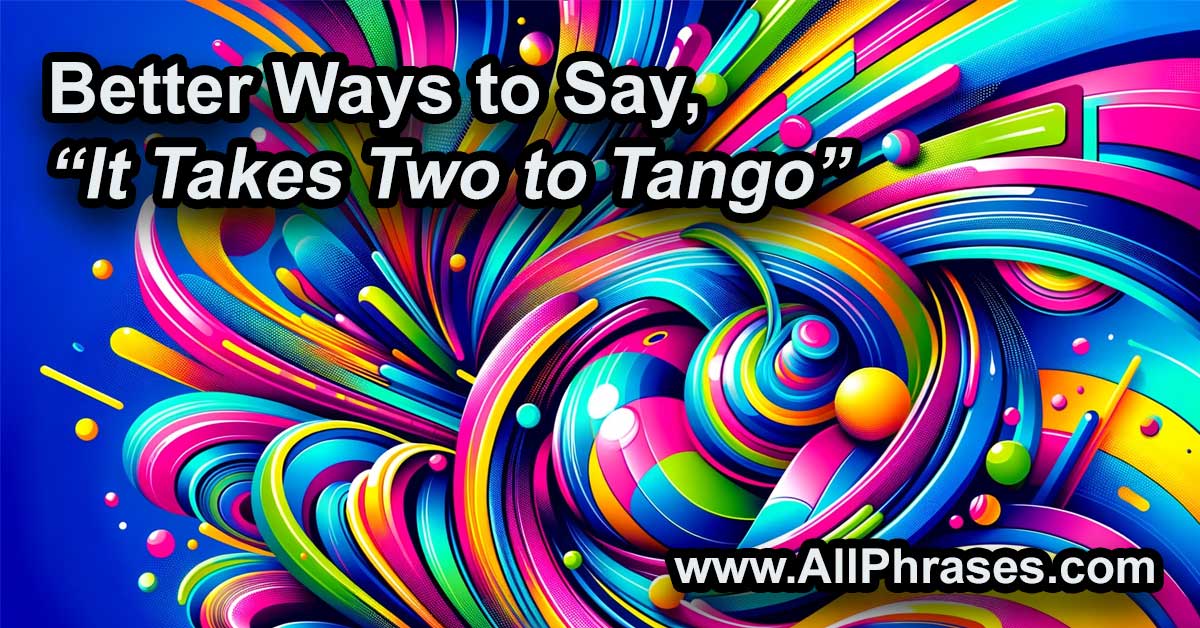We’ve probably all heard the phrase, “It Takes Two to Tango.” In a world where collaboration and partnership are more crucial than ever, this age-old saying has danced its way into countless conversations.
But why stick to the same old tune? Join us as we spin through a vibrant collection of fresh and engaging phrases that capture the essence of mutual effort and teamwork in a whole new rhythm.
Get ready to add some new steps to your conversational dance!
- Two hands clap together.
- Cooperation is key.
- Joint effort required.
- A duo’s dance.
- Double act necessary.
- Tandem tasks.
- Both sides of the coin matter.
- A two-person puzzle.
- Shared responsibility.
- Partners in play.
- It’s a two-player game.
- Dual involvement essential.
- Together in tandem.
- Mutual participation needed.
- A double-ended sword.
- Both oars in the water.
- A dual endeavor.
- In it together.
- Two parts of the same whole.
- Collaboration is crucial.
- Two to make a thing go right.
- A partnership pact.
Each of these phrases emphasizes the concept of mutual involvement or responsibility in various situations, akin to the idea that both partners are needed in a tango dance.
History of “It Takes Two to Tango”
“It takes two to tango” – a phrase as rhythmic as the dance it references, has a history that’s as captivating as the tango itself. Originating in the early 20th century, this idiom pirouetted from the sultry dance halls of Argentina into the global lexicon.
It gained widespread popularity in the 1950s, particularly in the United States, symbolizing the dance’s intricate, cooperative nature. Beyond the dance floor, it evolved to imply that certain actions or situations require two participants, both equally responsible.
This phrase has since sashayed through various cultural and linguistic landscapes, embodying the essence of partnership and shared responsibility in its catchy, memorable rhythm.
When to Use a Phrase Like “It Takes Two to Tango”
- Keep It Simple: Basically, talk like you’re explaining something to a friend. Use easy words that everyone gets.
- Be Original: Try not to repeat the same old sayings. Mix it up a bit, you know?
- Explain the Why: Don’t just throw facts out there. Tell people why they should care. It’s like saying, “Hey, this is important because…”
- Smooth Transitions: Make your writing flow like a good conversation. Don’t jump around topics abruptly. It’s like walking someone through a story.
- Be Direct: Use the active voice. Instead of saying, “The ball was thrown by her,” say, “She threw the ball.” It’s clearer and more engaging.
- Watch Your Spelling: No one likes typos. Double-check your writing to keep it neat and tidy.
- Chat It Up: Write like you speak. It makes your writing feel more personal and less robotic.
- Rich Details: Don’t be afraid to give more info. Paint a full picture so the reader gets the complete idea.

